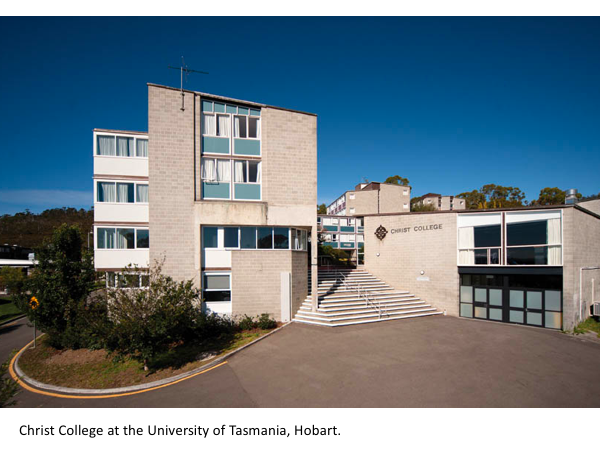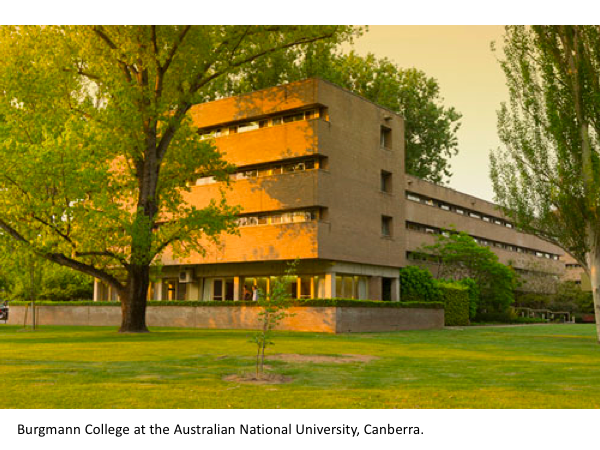You may never have heard of Dirk Bolt, but not only was he one of our best architects of the modern era, he went on to become one of the most significant worldwide proponents of sustainable urbanism. His story is exceptional and is worth telling, particularly as a memoriam to his passing in December last year.
DB, as we shall call him, was born in Groningen, northern Netherlands on 24th October 1930. He began studying architecture at Delft University, but in 1951 he moved to Australia, following his love Guusje (Kusha) van der Laan, who was in one of six families who moved to Tasmania to find a peaceful life after playing an active part of the Dutch resistance in WW2.
DB completed studies in town planning and architecture at Hobart Technical College, under Sydney Blythe. He works full time in an architect’s office (9am-4:50pm) then attends evening classes (5pm-10pm), followed by a bus and 4 mile walk home in pitch darkness, with leftovers for supper. While a student, he designs a house for his brother Frank Bolt, a photographer.
In 1953 he marries and in 1954 joins the AIA as a student member and begins working in the office of David Hartley Wilson. Upon graduation, he became a partner and formed ‘Hartley Wilson and Bolt Architects and Planners’, delivering some significant contributions to Tasmanian architecture within just a few years.
These include the Scottish Union Building (1960), then the tallest building in Tasmania at the time
(AIA Tas. Chapt. Enduring Architecture Award 2013); the Calvin Christian School, Kingston, Tasmania (1961) where he designed the first 3 classrooms and master planned future development for the Association of Christian-Parent Controlled Schools; and the Sandy Bay Bathing Pavilion, Long Beach, Hobart (1962) (now listed on Tasmanian Heritage Register).
His most interesting work in Tasmania was Christ College at the University of Tasmania (1961-62), commissioned to accommodate the relocation of University of Tasmania to Sandy Bay, it was the first residential college. Designed with materials to mature over time, such as natural concrete blocks and untreated timber, it is one of the earliest and most notable examples of Brutalism in Australia. It won the AIA 2011 Enduring Architecture Award (Tasmania) and is listed on Tasmanian Heritage Register, noting: “Bolt created a virtual hill town of visually different buildings grouped around a garden court”
 The Murray Street State Offices in Hobart of 1966-69, was a multi-storey office building with external reinforced concrete frame and recessed windows, an early version of the ‘Australian brutalist’ style. The building became the subject of a major conservation campaign prior to its demolition in 2018.
The Murray Street State Offices in Hobart of 1966-69, was a multi-storey office building with external reinforced concrete frame and recessed windows, an early version of the ‘Australian brutalist’ style. The building became the subject of a major conservation campaign prior to its demolition in 2018.
His interests are wide: he contributes to the planning of the ‘Cat-and-Fiddle Square and Arcade’; in 1960 he becomes a founding member of the National Trust of Australia (Tasmania); he works on the restoration of the Hobart headquarters of the Australian Medical Association (build 1963) and Cascade Brewery.
In 1960 DB publishes his planning dissertation called ‘The Hobart Rivulet’, an environmental analysis reporting on the deterioration of water and bank quality of the rivulet flowing from Mount Wellington. Sadly, his recommendations were deemed too far reaching and were rejected by the Hobart City Council.
In 1964 the local RAIA acknowledges Bolt’s ‘outstanding service to the Chapter and the Institute over the past years’ by naming the ‘Bolt Award for Urban Design’, just as he prepares to leave Tasmania, moving to Canberra to establish his own architectural practice, Dirk Bolt and Associates, to engage in designing the plentiful projects that were on offer, and acting as a planning consultant to the National Capital Development Commission (NCDC).
His detached houses in Canberra used low-cost, basic materials in structural elements such as concrete blockwork and metal roofing, whilst opting for higher quality materials for the fittings that people touched: joinery, doors, windows, fittings (just like Alvar Aalto). Many of his buildings utilised recessed, fluorescent pelmet lighting along areas of glazing. Bolt also designed furniture in Tasmanian timber.
These include the Westerman House, Fuller Street, Deakin (1965), Smith House, Fuller Street, Deakin (1965), English House, 34 Munro Place, Deakin (1965); Berry House, 8 Reibey Place, Curtin (1965), Butler House, Beauchamp Street, Deakin (1965) (ACT Chapter Enduring Architecture Award recipient); Griffith House, 90 Dunstan Street, Curtin (1966); Goodspeed House, 98 Dunstan Street, Curtin (1966); Bahr House, 1 Astley Place, Garran (1966) (later designated a heritage property, with the RAIA ACT Chapter 25 year award in the year 2000).
It has been observed that “many of his houses have been altered over the years, with concrete blockwork in particular falling victim to render and paint”. His group housing schemes used a diverse range to housing types with easy access to outdoor private space, promoting interaction between people of different ages and social groups.
These include the Hackett Courtyard Housing, Grayson Street, Hackett (1966) (one of the earliest courtyard-style multi-unit housing schemes in Australia), Aranda townhouses, Jalanga Crescent and Jalanga Place, Aranda (1966); Torrens courtyard housing, Batchelor Street, Torrens (1966) (the first stepped three-storey development in Canberra which later became very popular); Torrens townhouses, Basedow Street and Davies Place, Torrens (1967); Woden South Group Centre, Mawson (1968) (DB’s stepped and courtyard housing was amongst the earliest examples in Australia); Farrer townhouses, Gatton Street, Farrer (1968).
By the end of 1969, in just 5 years, ‘Dirk Bolt and Associates’ had provided advice to, or planned, 15 suburban centres in Canberra, including preliminary work on the Tuggeranong Town Centre and Belconnen Town Centre. DB was involved mostly in basic spatial planning and preparation of control drawings and he advocated successfully for the creation of Lake Ginninderra although he expressed his disappointment with the centre’s eventual layout.
These projects included Neighbourhood Centres in Aranda (1966); Pearce (1966); and Torrens (1967); and the commercial work included the Church of Christ, Marrawah Street, Lyons (1965).
Again, his most significant building is a university college, ANU’s Burgmann College in Daley Road Acton. The original design of 1970 was intended to have four wings around a central courtyard with attached service buildings. In 1971 only two wings were completed which formed an L-shape building. It has been described as ‘Japanese-inspired design mixed with Dutch pragmatism’ using sliding doors and windows similar to shoji screens, recessed horizontal fenestration, with a restricted palette of materials.

As a former resident (down the corridor from Peter Garratt of Midnight Oil fame) in 1973, the building seemed to me both plush and austere. For instance, there are shared bathrooms in the centre of the plan (a simple cost saving) but the there are basins in every room (a generosity for personal grooming and for filling the kettle for tea and visitors).
In 1970 DB leaves Canberra to begin employment with the UN Office of Technical Cooperation and the UN Centre for Housing, Building and Planning, consulting to many agencies and governments on planning, sustainability and development, and shortly after begins work for the World Bank in Gambia (1971-75). In 1976 he assists the government of Tanzania as Director, Urban Design and Housing, of the Capital Development Authority, Dodoma.
In 1976-78 he works for the World Bank in Indonesia, after which he begins teaching urban planning at the University of Auckland, New Zealand (1979-84) during which time he completes a PhD in Town Planning on The Development Ratio: A model for a human urban future, concerned with sustainable, equitable and humane town planning.
In 1984 he is appointed Senior Lecturer in urban design at the University of Auckland, although his quiet work on sustainability is overshadowed by the design studio gurus like David Mitchell, Mike Austin and Kerry Morrow. As a Masters student there in 1982 I found both sides engaging, although DB’s ideas on design ratios then seemed too esoteric for me to appreciate its profound potential.
Canberra is not far from his heart and whilst in Auckland he submits a proposal to the NCDC to build a sustainable new town in Gungahlin using his research, which he develops in his later work on low energy planning, tools for mega-city planning in developing countries, and affordable timber modular construction for residential homes. It later develops into a low energy model in studies for The Hague, Netherlands
In 1986 DB leaves Auckland and serves as Director of Public Works in Fiji, developing principles in disaster relief housing following a hurricane, and the circle is completed a year later as DB moves back to the Netherlands, and begins teaching urban planning at Universiteit Twente, a public technical university in Enschede; later he becomes a professor and is appointed head of urban planning, later Professor of Urban Planning and Management at the International Institute for Geo-Information Science and Earth Observation (ITC).
During this time, he collaborates with Ove Arup and Partners to design a neighbourhood which is self-sufficient in energy and sewerage treatment for the Schoonebeek Council. This draws on his sustainable knowledge from his studies in New Zealand. Still Canberra is not far away: he enters an ideas competition for an economically sustainable urban development in the Jerrabomberra valley (his far-sighted concept did not come to fruition); and in 2013 he is a finalist in CAPITheticAL design ideas competition, for a hypothetical Australian capital city.
In 2000 DB retires from appointed positions and moves to Aberfeldy, Scotland to live close to his family. DB continues to design, further involved in promoting the development of sustainable building and planning.
There are two books on his work. In 2012 the ACT AIA publishes a monograph by Graeme Trickett and Ken Charlton on Bolt’s work in Canberra: ‘Repose: The Contribution of Dirk Bolt to Canberra’s Architecture and Planning’. Following DB’s passing the local chapter has recently discovered they have some unsold copies, available if you contact them directly.
Shortly before his death he publishes his memoir ‘Of Towns and Countries: journey of an architect’ (published by Austin MacAuley, London, Oct 2020). It covers his rationale and background underpinning his urban thinking, covering seven decades of global change from the post-war recovery to our modern existential threat from climate change. Available at good bookshops, if you prompt them.
Altogether a life lived so others may live well.
 Dirk Bolt
Dirk Bolt
Courtesy: Archiectureau
Tone Wheeler is principal architect at Environa Studio, Adjunct Professor at UNSW and is President of the Australian Architecture Association. The views expressed here are solely those of the author and are not held or endorsed by A+D, the AAA or UNSW. Tone does not read Instagram, Facebook, Twitter or Linked In. Sanity is preserved by reading and replying only to comments addressed to toneontuesday@gmail.com

